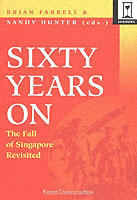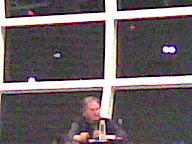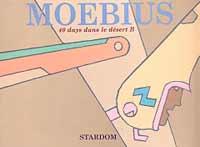 Secret Pods, Labyrinthine Libaries, A Mysterious Personage and Three Writers
Secret Pods, Labyrinthine Libaries, A Mysterious Personage and Three WritersI was at a talk and panel given by Robert S. Sawyer, Norman Spinrad and Bruce Sterling on Monday night at the sixteenth level of the library.
Before the talk, I waited with Kelvin, Brian and JF at a reception area. Robert Sawyer came up and started talking to us. I told Friendly Rob that I had read about three or four of his novels and have about eight or ten lying about. I told him that I first discovered 'Factoring Humanity' some years ago and was struck by its humanity of this hard SF novel. Friendly Rob said that this was his most favourite of all his work.
The reference library of the National Library is known as the Lee Kong Chian Reference Library and evidently the sixteenth level is known officially as the 'Pod' and is within the confines of that Lee Kong Chian Reference Library. So, a reference to this location would be the "Lee Kong Chian Reference Library - Level 16 - The Pod at the National Library at Victoria Street". Confused yet? The 'Pod' is already an overused and tired word as well as being part of a product name. The word is getting somewhat dated through 'over-usage' and can only get more dated in a few years. As if it is not enough with bad names, the Pod, being on the sixteenth level cannot be reached through the lifts in the main lobby which stops on the thirteenth floor, it can only be accessed using a keycard via a lift secreted in a large hall on the third floor of this new monstrous and labyrinthine library. Amusing to say the least. Anyhow, enough with the absurdities of the library and its myriad names.

The title of the talk and panel discussion is 'The Future Is Already Here: Is there a place for science fiction in the 21st century?' It is also the title of a talk that Robert Sawyer gave to the Library of Congress some time back.*
Sawyer is the
optimist which is not a surprise given that he is one of the few purveyors of hard SF left today.
Sterling examined the genre worldwide (Italy, Mexico, Finland, Japan) and related fantastic fiction like New Wave, magic realism, hard SF, anime/manga, etc and he pronounced that speculative fiction is thriving at present. He took the long view and noted that SF is a relatively young form within the vast span of human history and there is no guarantee that it will last.
Spinrad disagreed with the title and pointed out the semantic absurdity of the premise.

There was a question from someone about the short story form and why she thought it had received less attention. Sterling spoke of the SF magazines which publishes short stories and Sawyer spoke of the editors. Spinrad spoke of the form and noted that the short story is not a short novel and neither is the novel a long short story and went on at length.
When the direction of the talk shifted to alternate history and military SF written by the likes of S.M. Stirling and Harry Turtledove, I posed a question to Spinrad on 'The Iron Dream' about his satire. It was too amusing not to ask. 'The Iron Dream' was, of course, a SF novel ('Lord of the Swastika') purportedly written by Hitler, filled with phallic symbols (ie Steel Commander) and 'glorious' violence as found in the military SF genre. Spinrad responded and spoke of a joke he had with his editor, agent or publisher (I forget which) and how he had ideas for a large joke which will, under an assumed pen name, create a military SF series where the protagonists conquered and destroyed the worlds of other SF...
Brian asked what their thoughts were on an interesting Dick story on precogs and SF writers and a SF convention when the thread of the conversation was on SF predicting the future. All three writers did agree that SF is not predictive literature. Sterling also mentioned of his talks with corporate futurists. Later, the direction shifted to the entertainment aspects of SF.

At a point in the discourse, one of the members of the audience asked about 'Dune' which he thought was the greatest SF novel ever written. This brought upon a howl of laughter from everyone in the panel and the audience including Kelvin, Brian, myself. Sterling, Sawyer and Spinrad laughed and Sterling said that 'Dune' is not a great SF novel. The others said something to that effect. I do think it is about time that people recognised that 'Dune' is NOT the greatest SF novel of all time, nor is it a great SF novel. Finally, someone has the courage to say it out loud. A case of the Emperor's New Clothes!
Woo!
On a curious note, the panel of science fiction writers was 'moderated' by a person who during the course of the talk mentioned his name as 'Singh' and nothing more. Who was this person who was seated between the writers? Was he a moderator? A government handler? An internal security staff? A librarian? A writer? A critic? A famous
cultural commentator? A renowned educator? Sponsor of the event? He did not appear to have shown any indication of having read any work from Sawyer, Spinrad and Sterling. Why was he there? Moderation? He stuck out like a sore thumb throughout the session.

Spinrad mentioned his fascination with Admiral Cheng Ho and his voyages and what might have been the voyages had continued. He noted the existence of the '1421' book. He was curious and had noted that there was an exhibition in Singapore on this. I showed him a book I had with me, Paul Kennedy's 'The Rise and Fall of the Great Powers' which did compare the powers at 1500 and the subsequent rise of Europe and decline of Ming China and other civilisations.
After the talk, I managed to ask Spinrad if his new fantasy novel, 'The Druid King', was prompted by 'ka-ching' a la Kevin J. Andersen? He told me that he had read Julius Caesar's account of Gaul and, as it was, it was an account from the victor, he wanted to do a historical re-telling. Julius Caesar's 'The Gallic War' and 'The Civil Wars' are amongst the most eloquent of propaganda and literature. (The Commentaries) I had read the former but not the latter. I will be giving 'The Druid King' due consideration after this. I also did manage to ask him about 'Bug Jack Barron' (1969) which pre-dated Phil Donahue, Oprah and Geraldo. A precursor of things to come.

Then, Sterling came. He said that he had been obligated to write his
blog for Wired. I said he could easily put many photos just as he had been doing. He said he wasn't a good photographer. Spinrad asked how much he is being paid for the blog and Sterling laughed, saying that it was not enough. Sawyer has a
website and a
blog too.
On a superficial level, my observation of the three authors were that they were personable and approachable. None of them were self-important, nor were they acting like celebrities. They were passionate people. Spinrad was engaging with ideas abound, Sterling was sincere and down to earth and Sawyer very friendly and articulate. Some of Sterling's statements were sometimes laced with irony but they were not the bitter and black irony of certain cynical British writers and commentators. He's a Texan, how bitter can Texans get? (Okay, one did get angry enough to invade on account of someone trying to kill his dad... Hahaha.)

I had a migraine throughout the talk and my head was pounding. Intense pain. My eyes were 'tearing'. While I waited, Wilson managed to ambush Sterling and got an autograph from Bruce Sterling for his nice hardcover copy of 'Heavy Weather'. I don't know if Wilson was armed with a rotary cannon or what. Woo!
Then, we adjourned though I would have loved to talk to Spinrad, Sawyer and Sterling further. Brian, Wilson and Colin went over to CHJMES for dinner while I took a taxi home.
AddendumRobert Sawyer gave an earlier
talk at the Library of congress in 1999 and the
text is available at his website. A worthwhile read.
*Robert Sawyer mentioned this in his talk."There was that word again, and that was where the whole thing was at. Malcolm Shabazz, Prophet of the United Black Muslim Movement, Chairman of the National Council of Black Nationalist Leaders, Recipient of the Mao Peace Prize, and Kingfish of the Mystic Knights of the Sea was neither more nor less than a nigger. He was everything the shades saw when they heard the word nigger: Peking-loving ignorant dick-dragging black-oozing ape-like savage. And that cunning son of a bitch, Malcolm knew it and played on it, making himself a focus of mad white hate, the purposeful prime target of garbage throwing screaming Wallacite loonies, feeding on the hate, growing on it, absorbing it, saying to the shades, "I'm a big black mother, and I hate your fucking guts, and China is the Future, and my dick is bigger than yours, you shade bastard, and there are twenty million bucks lkike me in this country, a billion in People's China and four billion in the world who hate you like I hate you, die you shade mother!"Exerpt from Norman Spinrad's 'Bug Back Barron'
 All Roads lead to Rome
All Roads lead to Rome


























 The Stone Bridge
The Stone Bridge The Trail
The Trail









